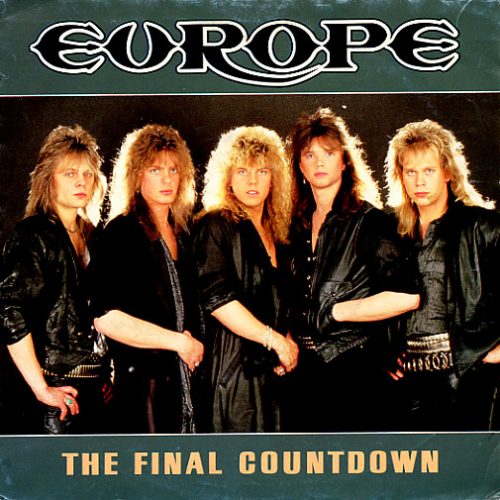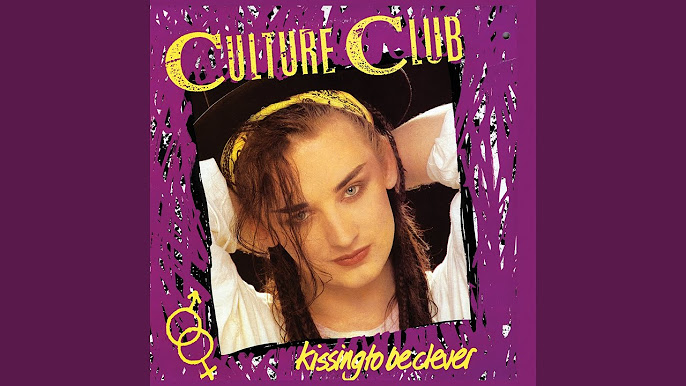80s
Favorite 100 Albums of the 80s: (#83) Tiffany – Tiffany

YEAR RELEASED: 1987
NOTABLE TRACKS:”I Think We’re Alone Now”, “Could’ve Been”, “I Saw Him Standing There”, “Feelings Of Forever”
ALBUM MVP: “Could’ve Been”
WHY I LOVED IT: This was, is and always will be one of my great 80s musical guilty pleasures. No teenage dude in the 80’s would fess up to be a fan of Tiffany’s music but whatever, I was all about it. In fact, this Tiffany LP was one of the last great candy pop of the 80’s I can remember, as not long after my musical affection took a sharp turn towards R&B, starting with Bobby Brown and extending into the 90’s golden age era of slow R&B jams. Critically speaking Tiffany’s album was kind of lousy, at least if you listened to those critics, but I really don’t give a shit what they think. The bigger, more impressive story is Tiffany being one of the bigger teenage sensations I can ever remember either then or now. This girl took to having a mall tour to promote her record and make a name for herself—that’s some ambition right there. “I Think We’re Alone Now” is her most popular single and smash hit. Many fans particularly young ones didn’t know the song was actually a cover made famous by Tommy James and the Shondells 20 years prior. I liked it of course, but my personal favorite was “Could’ve Been”, which came in at No. 40 on my Favorite 100 Songs of the 80’s countdown earlier this year. It struck an emotional chord with me like few others and it still resonates with me today. I love that song and PS—I’m not crying, you’re crying. “I Saw Him Standing There” was a Beatles cover with the title changed from her to him. Alrighty then. Tiffany’s album is a huge slice of glorious 80’s cheese and a deliciously sexy slice at that. Also, I met Tiffany at an autograph signing a handful of years ago and she couldn’t have be nicer. Not only was she a talented artist but an equally nice person. Rock on, Tiffany!
COMMERCIAL SUCCESS: Tiffany’s self-titled album not only climbed all the way to number-one on the Billboard Top 200, but unseated Michael Jackson’s “Bad” in doing so. At just 16 years old she became the youngest female artist to ever have a number-one album and two number-one singles after both “I Think We’re Alone Now” and “Could’ve Been” reached the top spot on the Billboard Hot 100. “I Think We’re Alone Now” spent two weeks at number-one before getting knocked off by Billy idol’s “Mony Mony” and finished 18th on the year-end Billboard chart for 1987. “Could’ve Been” also spent two weeks atop the Billboard Hot 100. “I Saw Him Standing There” peaked at seven on the Billboard Hot 100 and a fourth single, “Feelings of Forever” stalled at 50 on the Billboard Hot 100. This album sold over four million copies.
FUN FACTS: From the ever-so-amazing Songfacts.com, here’s the story of Tiffany becoming a star and having her first smash single. “Tiffany was just 13 years old when she started recording with producer George Tobin, who met her a year earlier and was impressed with her talent. Tobin, who owned his own studio in Los Angeles, had produced Kim Carnes (“More Love”) and Smokey Robinson (“Being With You”). He couldn’t find an appropriate manager for Tiffany, so he handled the business side of her affairs after signing her to a production deal.
Finding good, original songs is hard for an unknown singer, since the top songwriters want to place their cuts with established acts, so Tobin looked for cover songs for Tiffany, and came up with “I Think We’re Alone Now,” which she wasn’t thrilled with but recorded anyway. Tobin then shopped her to record companies, and after being turned down by Clive Davis and about a dozen others, found a taker in Steve Moir at MCA Records. Unfortunately, Moir left MCA soon after, and the company gave Tiffany little support. It became clear that she wasn’t going to succeed through traditional means, so Tobin went to the MCA “special projects” division and hatched an idea: the mall tour.
Starting in Paramus, New Jersey, the 16-year-old Tiffany toured shopping malls, singing for free to whoever would listen. It was a novel approach, and it worked very well, especially when media outlets covered the story of this teenager who sang for shoppers. The mall crowd (young girls) was a great fit for Tiffany, who found a way to reach this audience long before there was Twitter.
80s
Pigeimmo: The Future of Real Estate Investment
Imagine a world where real estate investment is as accessible as clicking a button on your smartphone. Enter Pigeimmo, an innovative platform that’s reshaping the landscape of property investment. Gone are the days of needing substantial capital or navigating complex transactions. With Pigeimmo, anyone can dive into real estate and start building their portfolio with ease.
But what exactly is Pigeimmo? How does it work, and why should you consider jumping on this trend? As we explore its benefits, potential risks, and success stories from fellow investors, you’ll discover how this revolutionary approach could be your gateway to financial freedom in the booming real estate market. Whether you’re a seasoned investor or just starting out, there’s something here for everyone looking to make smart investment choices in today’s dynamic economy.
What is Pigeimmo and How Does it Work?
Pigeimmo is a cutting-edge investment platform designed to democratize real estate. It allows users to invest in property projects without the need for hefty capital upfront.
Through an intuitive interface, Pigeimmo connects investors with various real estate opportunities, from residential developments to commercial properties. Each project listed on the platform provides detailed information about potential returns and associated risks.
Investors can choose how much they wish to contribute and diversify their portfolios easily. By pooling funds together, Pigeimmo enables smaller investors to access high-value projects that were once reserved for wealthy individuals or institutional players.
The process is streamlined—sign up, browse available listings, select your investment amount, and track performance through your dashboard. This level of transparency makes it easy for newcomers and seasoned investors alike to navigate the world of real estate investments confidently.
The Benefits of Investing in Pigeimmo
Investing in Pigeimmo offers a range of benefits that appeal to both seasoned investors and newcomers alike. One of the most significant advantages is accessibility. You can start investing with lower capital compared to traditional real estate options.
Pigeimmo also provides an opportunity for diversification. By allowing you to invest in various properties, it helps spread risk across different markets and locations. This feature enhances your overall investment strategy.
Moreover, Pigeimmo utilizes technology to streamline processes. From property selection to management, everything becomes more efficient and transparent. Investors can easily track their investments online.
The potential for passive income adds another layer of attractiveness. Rental yields from properties contribute consistently without requiring hands-on involvement from the investor.
Being part of an innovative platform means you are joining a movement that’s reshaping how people view real estate investment today. The future looks promising for those who choose this route.
The Potential Risks of Pigeimmo
Investing in Pigeimmo, like any venture, has its share of risks. One significant concern is market volatility. Real estate markets can shift unexpectedly due to economic changes or shifts in consumer preferences.
Liquidity is another critical factor. Unlike traditional investments, getting your money back from Pigeimmo may take time and effort. This could pose challenges if you need quick access to cash.
Additionally, the technology aspect can’t be overlooked. As a digital platform, Pigeimmo relies on advanced systems that might face technical glitches or cyber threats.
Thorough research is essential before diving in. Not all projects listed on Pigeimmo are guaranteed to succeed. Investors must evaluate each opportunity carefully to avoid potential pitfalls and losses down the line.
How to Get Started with Pigeimmo
Getting started with Pigeimmo is straightforward. First, sign up on their platform by creating an account. This process typically involves providing basic personal information and verifying your identity.
Once you have access, explore the available investment opportunities. The user-friendly interface makes navigation simple, allowing you to view various properties and investment options.
Next, decide how much you want to invest. Pigeimmo caters to a range of budgets, so whether you’re looking to dip your toes in or make a significant commitment, there’s something for everyone.
After choosing your investment strategy—whether it’s residential or commercial properties—you can easily execute transactions through the platform.
Don’t hesitate to utilize resources provided by Pigeimmo like webinars or guides that can enhance your understanding of market trends and strategies. Engaging with their community forums also helps connect with other investors for advice and insights.
Success Stories from Pigeimmo Investors
Many investors have found success through Pigeimmo, transforming their financial landscape. One such investor is Sarah, who began with a modest investment and saw her portfolio grow exponentially within just two years.
Her journey exemplifies how strategic choices can lead to impressive returns. By leveraging the insights provided by Pigeimmo’s platform, she identified high-potential properties that traditional methods often overlooked.
Then there’s Mark, an experienced real estate developer who turned to Pigeimmo for diversification. He was able to spread his investments across various markets seamlessly. This approach not only minimized risks but also maximized opportunities for profit.
These stories showcase the transformative power of innovative platforms like Pigeimmo in reshaping the ways individuals engage with real estate investing today. Each narrative highlights unique strategies and personal experiences, illustrating diverse paths toward financial growth in this exciting arena.
Comparison with Traditional Real Estate Investments
When comparing Pigeimmo to traditional real estate investments, several key differences emerge. Traditional investing often requires a hefty down payment, extensive mortgage processes, and ongoing management responsibilities.
Pigeimmo flips this model on its head by allowing fractional ownership. This means lower entry costs and greater accessibility for everyday investors. You can invest in properties without the burdens of maintenance or tenant issues.
Liquidity is another area where Pigeimmo shines. Unlike physical properties that can take months to sell, digital platforms enable quicker transactions with potential buyers at the click of a button.
Risk diversification also plays a crucial role here. With Pigeimmo, you can spread your investment across multiple properties rather than putting all your eggs in one basket—something traditional real estate doesn’t easily allow for due to high capital requirements.
These aspects make Pigeimmo an attractive alternative in today’s fast-paced market.
The Future of Pigeimmo and Its Impact on the Real Estate Market
The landscape of real estate investment is evolving, and Pigeimmo stands at the forefront. With its innovative approach, it’s reshaping how investors engage with property markets.
As technology advances, Pigeimmo introduces a level of accessibility previously unseen. More individuals can now enter the market without significant capital or complex legal knowledge. This democratization could lead to a surge in diverse investment portfolios.
Additionally, Pigeimmo’s model encourages transparency and efficiency through blockchain integration. Transactions become smoother and more secure, attracting savvy investors looking for reliability.
The potential ripple effect on traditional real estate practices is profound. Real estate brokers may need to adapt or risk becoming obsolete as platforms like Pigeimmo streamline processes that have long been cumbersome.
Emerging trends suggest that collaboration between traditional systems and new technologies will define the future of property investments. Those who embrace change early will likely reap substantial rewards as this field continues to mature.
Conclusion
Pigeimmo represents a significant shift in the way we think about real estate investment. It combines technology with property ownership, making it more accessible to a wider audience. Investors can enjoy unique benefits such as lower entry costs, increased liquidity, and diversification of their portfolios.
However, like any investment opportunity, there are risks involved. Market fluctuations and regulatory changes could impact returns. It’s essential for potential investors to weigh these factors carefully before diving in.
Getting started with Pigeimmo is straightforward. With the right research and due diligence, anyone can embark on this modern journey into real estate investing.
Success stories from early adopters show promising results. Many have found profitable opportunities that traditional methods may not offer.
When compared to conventional real estate investments, Pigeimmo stands out for its innovation and flexibility. The landscape is evolving rapidly; it’s exciting to watch how this new approach will reshape the market.
As Pigeimmo continues gaining traction among investors of all backgrounds, its influence on the future of real estate cannot be overlooked. The potential it holds might just redefine what it means to invest in property today and beyond.
80s
Favorite 100 Songs of the 80s: (#63) Europe – The Final Countdown

I was roughly 15-years old at the time this song came out and at once it became my essential training song. Back in those days I felt reasonably confident I was just a few short years away from making my debut as a WWF superstar and the future tag team partner of Mr. Wonderful Paul Ordnoff (I always wanted to be a heel). While visualizing my worldwide squared circle supremacy, I went as far to envision “The Final Countdown” as my theme song while strutting down to the ring—greeted by a rousing course of boos.
In reality this song wasn’t really intended to get aspiring athletes fired up. Inspired by David Bowie’s “Space Oddity”, it’s actually about taking a trip to Venus and leaving planet Earth behind—or something like that.
Who really gives a shit anyway?
Whether Europe intended so or not is irrelevant. “The Final Countdown” became the backbone of sports anthems at arenas everywhere and remains so over 30 years later.
They keyboard riff at the beginning is one of the coolest things I’ve heard in my life. It deserves to be on my countdown for that alone. Everything about “The Final Countdown” is outstanding. It’s on the National Honor Society of all 80s music that’s gloriously cheesy.
Chart Success: It reached number-eight on the Billboard Top 100 and remained on the chart for 18 weeks. It didn’t finish in the 1986 year-end Billboard Top 100, which is clearly some bullshit. It did finish number-one on the Netherlands year-end charts and third in France because both countries are way cooler.
Great Lyrics: If I had paid better attention as a 15-year old, I’d have put the curling bar down and wondered what the fuck this song is even about.
“We’re heading for Venus (Venus)
And still we stand tall
‘Cause maybe they’ve seen us (seen us)
And welcome us all, yeah
With so many light years to go
And things to be found (to be found)
I’m sure that we’ll all miss her so”
Fun Fact: On of the all-time bogus fabrications is that Europe is a one-hit wonder with this song. It even made VH-1’s list of 100 Greatest One-Hit Wonders. “The Final Countdown” wasn’t even their biggest hit on the album! “Carrie” reached as high as number-three on the charts, and “Rock the Night” was a third hit that cracked the Billboard Top 30.
80s
Favorite 100 Albums of the 80s: (#86) Culture Club – Kissing To Be Clever

YEAR RELEASED: 1982
NOTABLE TRACKS “Do You Really Want To Hurt Me”, “I’ll Tumble 4 Ya”, “Time (Clock of my Heart)”, “Take Control”
ALBUM MVP: “Do You Really Want To Hurt Me”
WHY I LOVED IT: This was the Culture Club’s debut album and to call it a guilty a pleasure is an understatement. Let’s keep things real here—back in late 1982 as an 11-year old it wasn’t exactly manly to like groups like Culture Club, featuring a lead singer literally dressed like a girl. It was a different world in those days and Boy George’s appearance was far more unique than would be so today. More importantly the group’s sound was a far cry from most groups I enjoyed then, such as Styx, Journey and REO Speedwagon. Despite all that I really enjoyed this album, probably more than I should’ve. Even as a pre-adolescent teen I found “Do You Really Want To Hurt” as kind of heartbreaking. It got re-popularized years later thanks to Adam Sandler’s The Wedding Singer movie. Now that I think about it Sandler deserves a lot of Culture Club credit to a newer generation because he featured “I’ll Tumble 4 Ya’ in his Billy Madison movie. I loved “Time (Clock of my Heart)”. It was chic back then to ridicule groups like Culture Club but don’t allow prejudice to stand in the way of quality music. It doesn’t get anymore 80’s than Culture Club, man—and I love it.
COMMERCIAL SUCCESS: The album reached No.14 on the United States Billboard Top 100 and enjoyed even more success around the world—reaching number-two in Canada, New Zealand and France while peaking at three on Sweden and Norwegian charts. “Do You Really Want To Hurt Me” and “Time (Clock of my Heart)” were both monster singles, each reaching number-two on the Billboard Hot 100. “I’ll Tumble 4 Ya” was the group’s third top 10 hit from the album, peaking at nine.
FUN FACT: Courtesy of Songfacts.com on their hit single “Do You Really Want To Hurt Me: “This was Culture Club’s first single released in the United States. It was a huge and unlikely hit for the British band, who embarked on an American tour in 1983 to gain traction in that country. The song crossed over to Adult Contemporary radio, where most listeners had no idea the lead singer dressed like a girl. MTV, whose library was mostly British bands when they launched, had acclimated their US audience to guys in makeup, so Culture Club wasn’t so shocking on the channel and the group developed a huge audience of young people who liked the sound and the look.
The “look” was authentic: Boy George had been wearing makeup and women’s clothes since his school days, and while he exaggerated it for publicity, it was his preferred style. In a 1983 Trouser Press interview, the singer explained: “I wear my hair this way ’cause it makes my face look longer, my hat because it makes me look taller, black clothes because they make me look thinner, and makeup because it makes me look prettier.”
-

 Technology3 months ago
Technology3 months agoSimpcitt: The Rise of a Unique Online Community
-

 Technology2 months ago
Technology2 months agoAnon Vault: Protecting Your Digital Footprint
-

 Entertainment2 months ago
Entertainment2 months agoSflix: How It’s Changing the Way We Watch Movies and TV Shows
-

 80s3 months ago
80s3 months agoFavorite 100 Songs of the 80s: (#1) Michael Jackson – Billie Jean
-

 Bills2 months ago
Bills2 months agoWhy Does My Instagram Reel Stop Getting Views After One Hour? How to Fix It?
-

 Blog3 months ago
Blog3 months agoSimpcitu: The New Age Trend Shaping Online Interactions
-

 Blog3 months ago
Blog3 months agoTributePrintedPics: Crafting Lasting Photo Tributes
-

 Podcast3 months ago
Podcast3 months agoChicken Wing Review/QB Comparison: Sonny Red’s In Lackawanna
